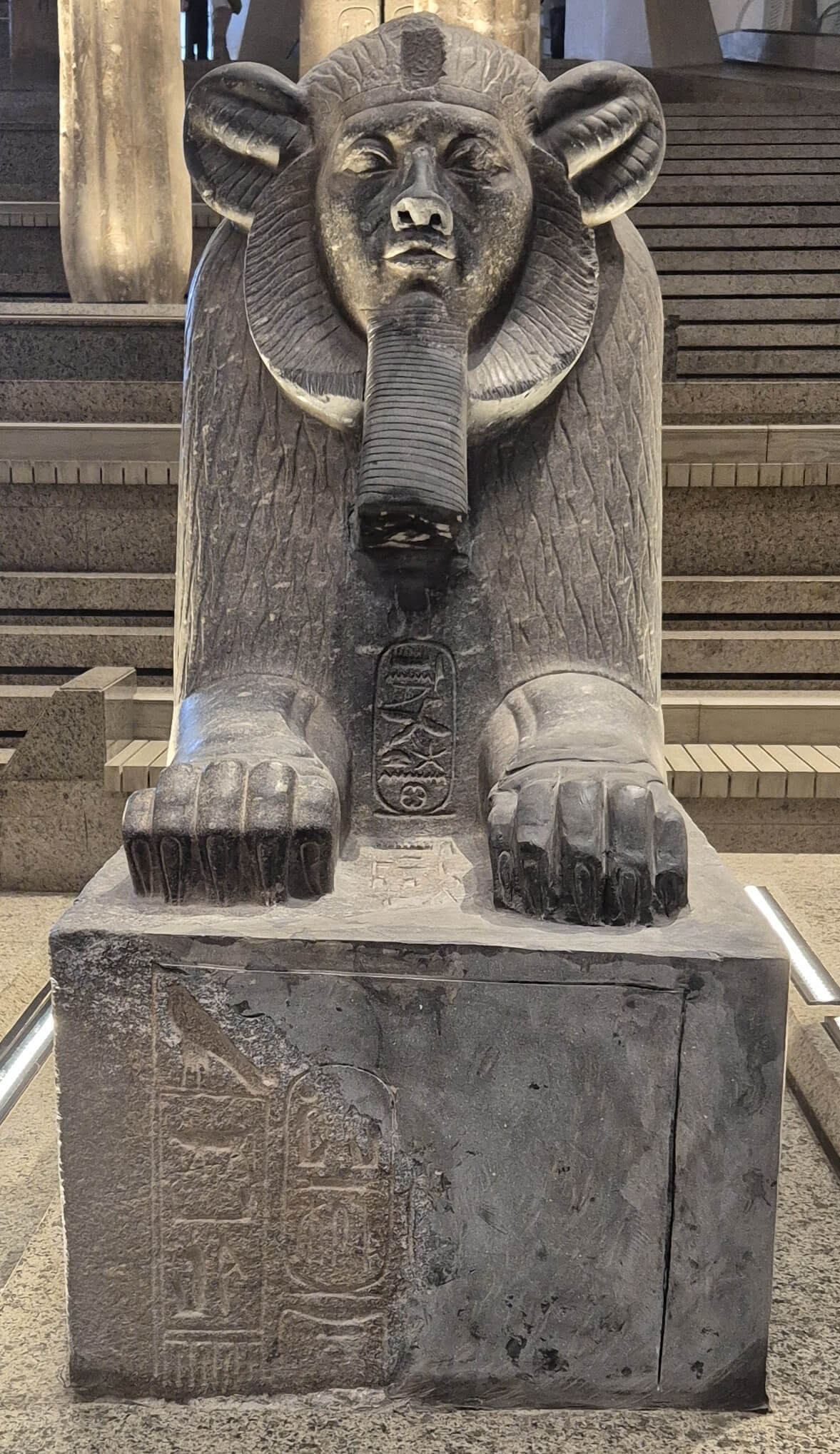
GEM 1381
Sphinx of King Amenemhat III
This sculpture represents one of seven nearly identical sphinxes of King Amenemhat III, ruler of the 12th Dynasty during Egypt’s Middle Kingdom (c. 1831–1786 BCE). Each sphinx in this series embodies the pharaoh’s dual nature—combining the raw physical power of a lion with the wisdom and divine rule of a king.
This particular sphinx was discovered at Tanis in the Nile Delta, a significant religious and political site in later periods. Carved from granite, the sculpture features Amenemhat III’s distinct facial features—a broad, youthful face with full lips and a serene expression—designed to evoke strength, calm authority, and eternal divinity. It was part of a broader tradition of templ ... Узнайте больше с Премиум!
Разблокируйте полную историю этого артефактаПерейдите на Премиум, чтобы получить полный доступ к описанию, аудиогидам и эксклюзивному контенту для всех артефактов.Получите полный доступ к аудио и описанию главных экспонатов ГЕМ за 1.99$
Ищете другой артефакт?